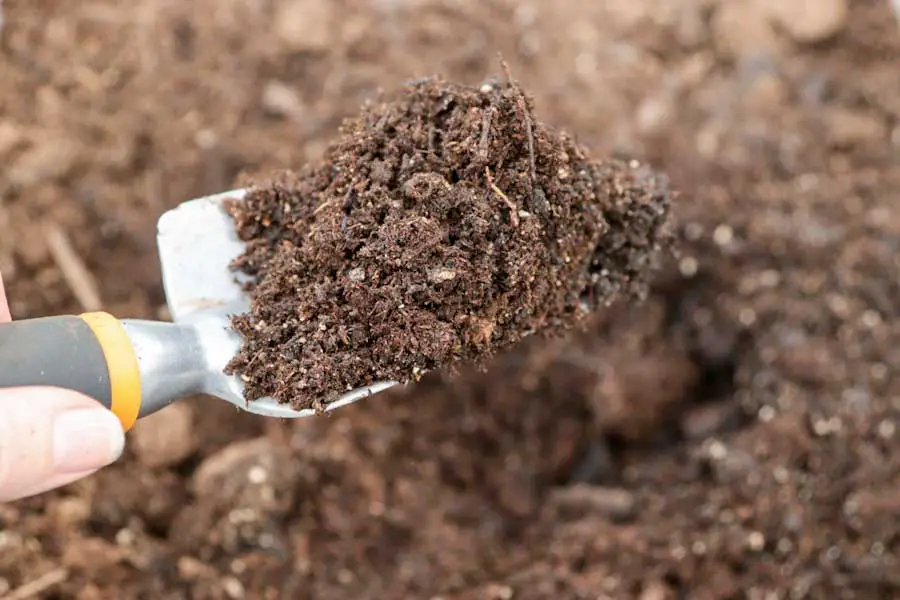
We may receive commissions from purchases made through links in this post, at no additional cost to you.
I’m a big fan of making things myself in general, and that goes for potting soil, too. I love the idea of customizing the ingredients to provide the best environment possible for my plant. But that side of me is often in conflict with the convenience factor of purchasing a pre-made mix. After all, those companies are the experts, right?
When it comes to potting soil for citrus trees, the choices available can be completely overwhelming. Every brand has different ingredients and ratios, and they all claim to be perfect for citrus trees.
While I am sure many of these mixes are great, the reality is, the only way I can be sure I’m giving my plant what it needs is by making the potting soil myself. So what’s a good citrus potting mix recipe? Or how do you choose the right commercial potting mix to buy?
To make an ideal citrus potting mix, mix 5 parts conifer bark fines, 1 part perlite, 1 part peat moss, coir, or aged compost, additives for acidity, and optional slow-release fertilizer. If you prefer to buy, choose a commercial potting mix that is slightly acidic with excellent drainage and aeration.
There are many “right” ways to make a citrus potting mix, but all good methods start with understanding the needs of the plant. Continue reading to learn exactly what kind of soil citrus trees need, a great DIY citrus potting mix recipe, and some recommended commercial citrus potting soil brands.
What does a potted citrus tree need from its soil?
If you think about it, most of a potted tree’s environment is its potting soil. If the tree was planted in the ground, it would have essentially unlimited space for the roots to spread and seek out water and nutrients. But in a pot, there is a finite amount of space and soil available.
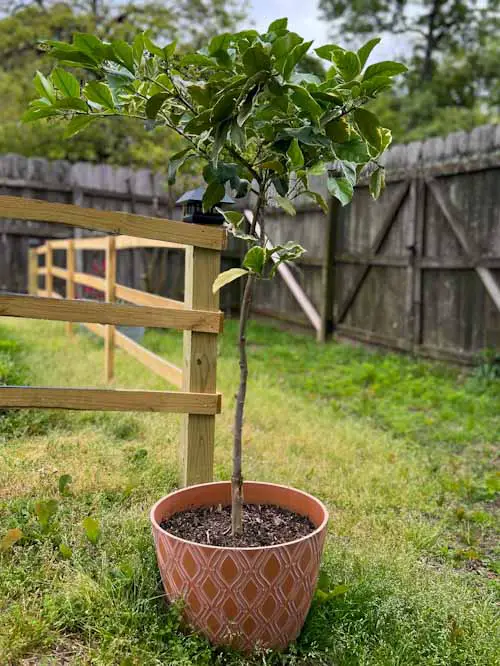
There are a few things you, the grower, can control (temperature, light, watering, fertilizing), but if the soil is wrong then none of it will matter. Providing the right growing medium is arguably the most important part of caring for a potted citrus tree.
So what makes a “good” potting soil? This can differ from person to person, and certainly from plant to plant. For me, it means I can water the tree thoroughly (within reason) without it getting waterlogged. I want it to provide the best environment possible for a healthy root system, so the tree can absorb the water and nutrients it needs.
Container-grown citrus trees need a soilless growing mix that provides good drainage, water retention, aeration, both organic and inorganic ingredients, and a pH level between 5.5 and 7.0. Below we’ll look at why each of these elements is essential.
Soilless Potting Mix
As tempting as it may be to dig some dirt straight from your garden to put in the pot…don’t do it! Even the most ideal garden soil is host to disease pathogens, pest eggs and larvae, and weed seeds. These issues will compound in a potted environment and can cause major problems for your citrus tree.
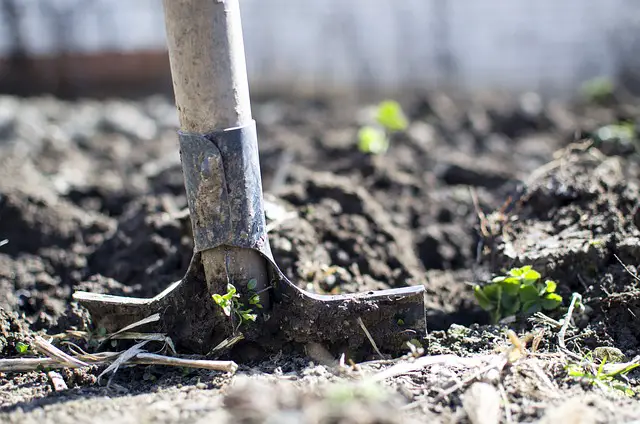
Straight garden soil also tends to be far more compacted than is good for containers. Compacted soil means the water and air won’t flow freely in the pot, causing fungal disease and root rot – common problems for citrus trees.
A “soilless” potting mix is simply that – one that contains no soil or actual dirt. Instead, soilless mixes are made up of a combination of ingredients, both organic and inorganic (more on this below).
Balance of Drainage and Water Retention
A good potting soil should contain some ingredients that hold onto moisture for a period of time so the plant can absorb it. These water-retaining components have to be in balance with ingredients that allow water to drain freely through the pot.
Citrus trees like evenly moist, but never soggy soil, so they need a potting mix that holds on to some moisture while allowing excess water to drain through.
Learn about exactly how to water potted lemon trees (and other citrus) here: Watering Lemon Trees: How to Get it Just Right.
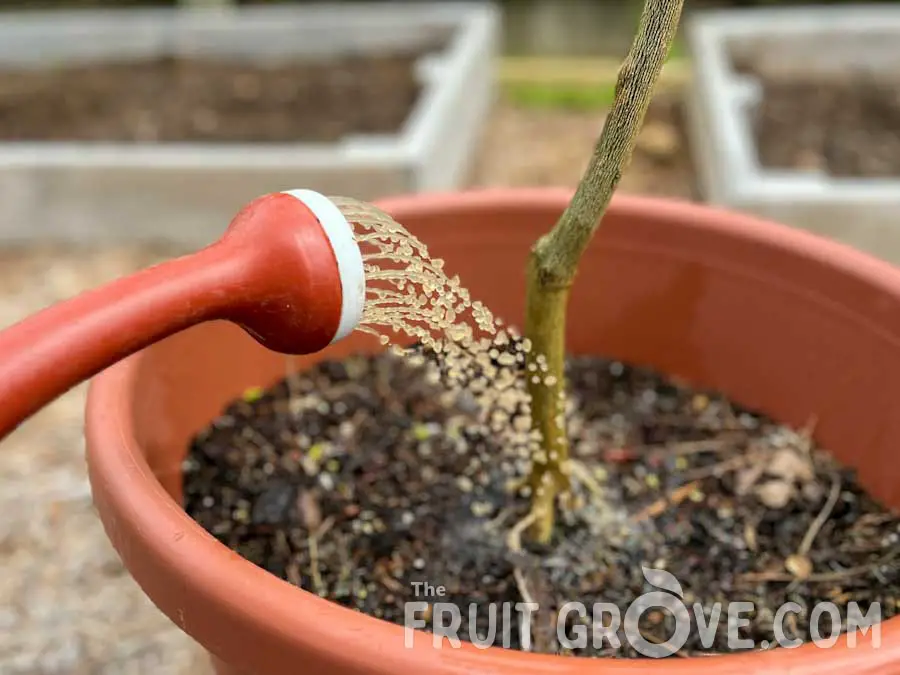
Examples of water-retaining ingredients are sphagnum peat moss, coconut coir, compost, worm castings, and manure. Ingredients that improve drainage include pine or other conifer bark, perlite, vermiculite, and coarse sand.
Drainage is improved by introducing larger pieces of material into the mix. Think of a pot filled with rocks, a pot filled with gravel, and a pot filled with sand. Which one will allow the water to drain more freely? The one with the largest particles, and therefore the largest air spaces (the rocks).
Contrary to gardening lore, placing stones, gravel, or other drainage material in the base of the pot does not improve drainage. In fact, it can more easily lead to root rot since there is less available soil in the pot, so the moisture that’s retained is more likely to sit around the plant’s roots.
Related: Is Your Citrus Tree Overwatered or Underwatered?
This happens because of something called the perched water table. Essentially, water wants to stick to itself (cohesion) or to other surfaces (adhesion). As the water drains toward the bottom of the pot and encounters a layer of drainage stones, much of it resists the new material.
The water will wick sideways back into the soil rather than drain out of the bottom. This leads to an oversaturated layer of potting medium just above the drainage layer…the perfect scenario for root rot.
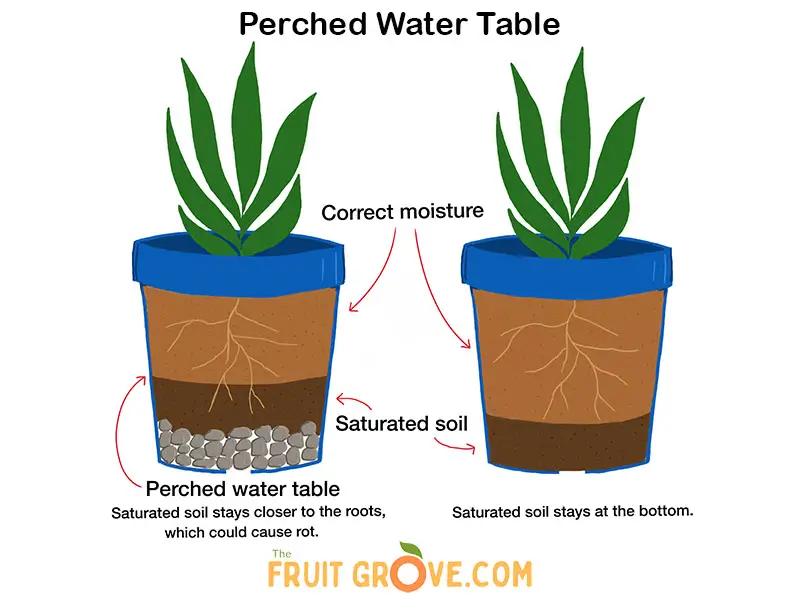
Aeration
Aerated soil allows oxygen (and other gasses) to move through the soil, just like water. Little pockets of air give the roots access to the oxygen they need to uptake nutrients and help the plant perform necessary functions, like photosynthesis.
Aeration also allows for carbon dioxide and other gasses that are a byproduct of decomposition to escape and not get trapped in the soil. A potting mix that isn’t properly aerated will become compacted, stunting root growth and preventing water from draining.
Just like with drainage, aeration is created by including ingredients with larger particles such as bark pieces or coarse perlite. A potting mix that is only made up of fine particles (compost, peat moss, sand, coir, etc.) will become compacted and won’t allow enough air to reach the tree’s roots.
Organic and Inorganic Ingredients
Both organic (derived from plants or animals) and inorganic (not derived from living things) ingredients are essential for a good potting mix.
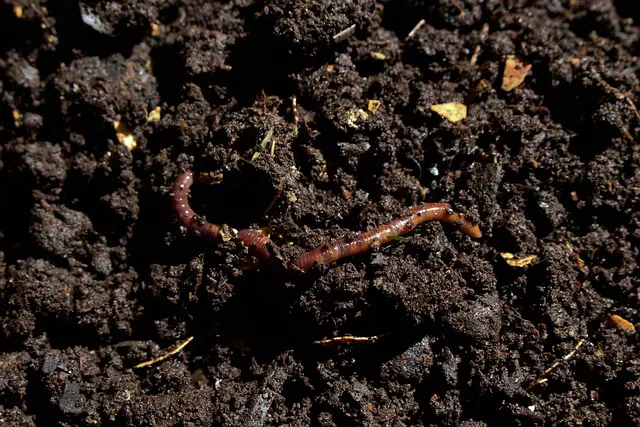
Organic potting mix ingredients are things that hold onto nutrients and/or water, such as wood chips, compost, peat moss, coir, leaf mold, and composted manure. These ingredients have fine particles and will break down over time.
Inorganic ingredients include perlite, vermiculite, or sand. They can help retain moisture, add weight, or help with aeration.
Perlite is essentially puffed-up volcanic glass. It holds onto some water when moistened, but it also contains little air pockets on its surface. Perlite is very porous and is a good choice when you need to lighten the soil and improve drainage.
Vermiculite is made of absorbent, spongy flakes that can absorb a lot of water – 3 to 4 times its dry volume. Vermiculite should be used with plants that like the soil to remain moist. Because it’s so absorbent, it does not aerate the soil well.
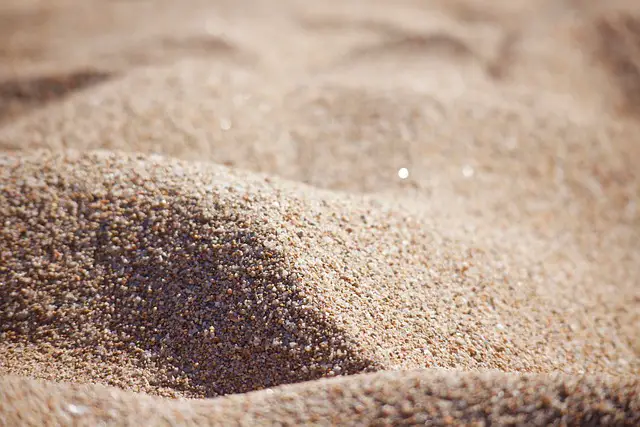
Sand will add weight to a mix because its tiny particles will fill in empty space. Fine sand particles, like what is found at most beaches, will compact easily and reduce drainage. If you need to add weight to a mix, use only coarse sand (typically ground from granite).
Correct pH Level
The ideal pH level for citrus trees is between 5.5 and 6.5, or fairly acidic. The soil’s pH level affects the ability of a plant to absorb nutrients. Soil that is too alkaline or too acidic will keep the plant from taking up the nutrients it needs to thrive.
Soil acidity can be adjusted in several ways. Some of the ingredients in the potting mix will affect soil pH – pine bark and peat moss may acidify soil somewhat, for example (although the extent of this is debated).
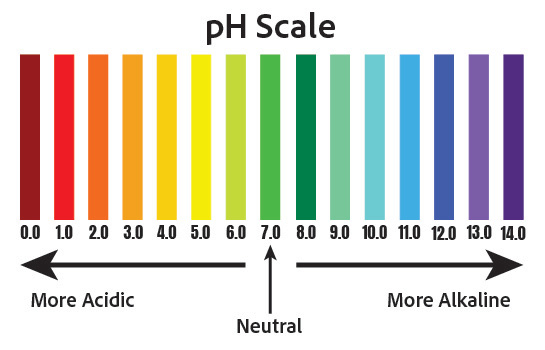
You can also add amendments to the potting mix to adjust the pH. For example, garden lime will raise the pH (make it more alkaline), and a sulfur-based soil acidifier will lower it. These additives will need to be broken down over many months in order to be effective, but they can work well with potted trees.
Some fertilizers are formulated for acid-loving plants, such as this Fox Farm Happy Frog Acid-Loving Plants fertilizer. If you are concerned that your potting mix may be too alkaline for your citrus tree, try feeding it with something like this.
Learn more about fertilizing container-grown citrus: Fertilizing Potted Lemon Trees: Everything you NEED to Know.
Make Your Own Citrus Potting Mix
My 5-1-1 recipe for citrus potting mix will work well for any citrus tree. I currently have a few happily potted citrus trees – Improved Meyer and Pink Variegated lemons, Moro blood orange, and Key lime – and they’ve been thriving.
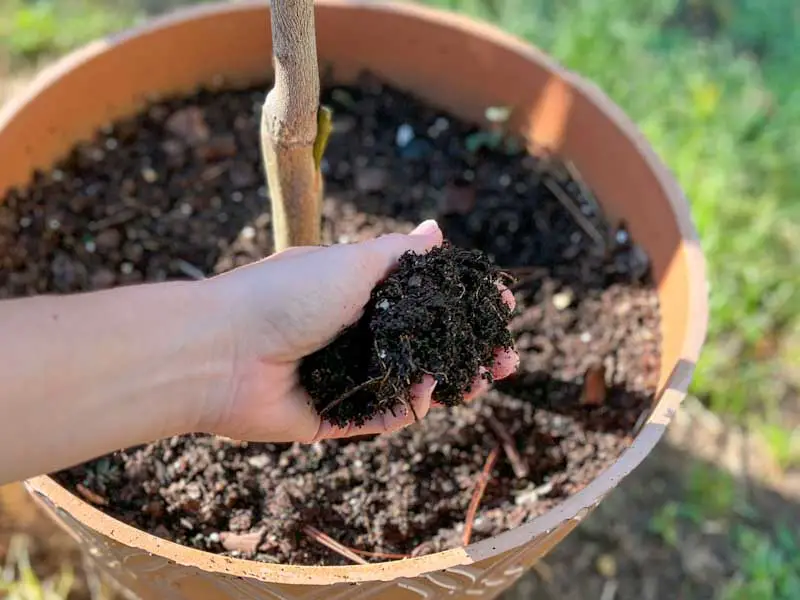
The individual ingredients may initially add up to cost more than a couple of bags of commercial potting mix, but you can make a huge batch. And, best of all, you can adjust the recipe to be optimal for your situation.
Do you live in a very dry climate? Maybe add a little more of the water-retentive ingredients (peat moss, compost, etc.). Does it seem too dense or heavy? Mix in some extra perlite or pine bark. You can also customize what kind of fertilizer you want to include, depending on the needs of the tree.
I’ve linked to where you can buy the ingredients below, but they should be fairly easy to find in stores.
Citrus Tree Potting Mix Recipe
- 5 parts fine conifer bark (pine, fir, etc.) – Aim for pieces that are about 1/2-inch long and wide. Fine bark can be tricky to find (and expensive). It’s often labeled as “orchid bark.” As a budget option, I’ve used regular shredded pine bark mulch and just picked out any pieces that were bigger than about an inch. Some growers have recommended using Reptibark, which is a fir bark substrate used in reptile aquariums (you can find it at pet stores). I’ve never used it for potting mix, but I think it’s a great idea.
- 1 part coarse perlite – I prefer to use coarse perlite to maximize the aeration benefits. Perlite does hold onto some moisture, but the coarser pieces will still allow air and water to flow through the mix. Coarse perlite is a bit harder to find, though, so smaller standard perlite can be substituted. Just be careful not to inhale the perlite dust particles.
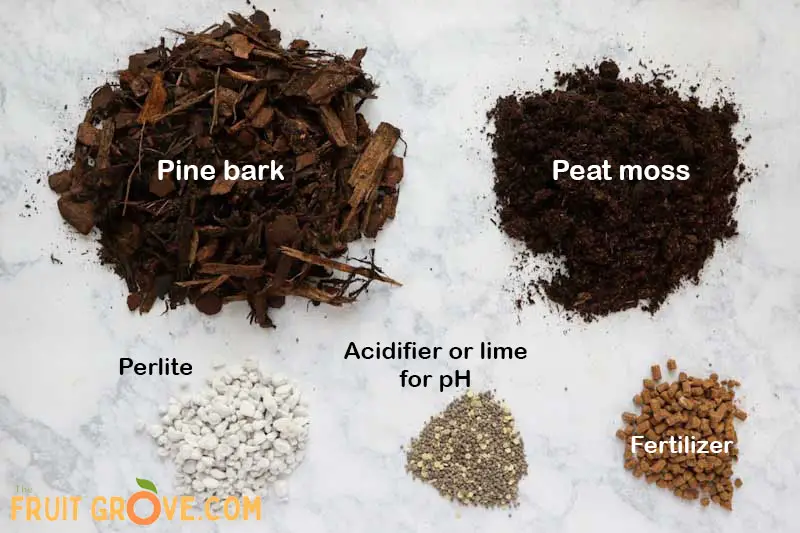
- 1 part coconut coir (or sphagnum peat moss), aged compost, or worm castings – I like to use a combination of these of ingredients. Coir is very water-absorbing, like peat moss, but tends to dry out a little quicker. I slightly prefer it for citrus trees for this reason, since they don’t like to sit in soggy soil (and coir is potentially more sustainable than peat moss, although that is still being debated). But there is a relatively small amount of these water-retentive ingredients in this mix, so it doesn’t make a big difference here.
- Garden lime or soil acidifier to adjust pH (optional) – Garden lime will raise the pH and soil acidifier will lower pH. These products take time to break down and adjust the soil acidity, so you won’t notice results right away.
- Slow-release organic fertilizer (optional)- Citrus trees, particularly lemons, are heavy feeders and love nitrogen-rich fertilizer. If you choose to add some to your potting mix (and I usually do), use a gentle organic formula with lower NPK numbers, to avoid burning the tree roots. Follow the instructions on the package to determine the correct amount to add.
Once you’ve mixed all of the ingredients together, pre-moisten the potting mix before planting the tree. Ideally, wet down the mix a couple of days before you need to use it. This will kickstart the soil’s water retention, and start breaking down the pH-adjusting additives.
Citrus Potting Mix Brands to Try
Although making your own citrus potting mix is a great idea, you may not have the time or space to concoct your own. There are many commercially available citrus-friendly potting mixes you can use. Often they are formulated for cacti and succulents as well, as these plants also need a fast-draining lightweight soil.
Most store-bought potting mixes are made of very fine particles, however – even the ones that claim to be for citrus trees. These will be quicker to compact and get waterlogged in a pot and will need some amending to make them ideal.
You can adjust any store-bought mix to have better drainage by adding pine or fir bark fines, untreated hardwood chips, or coarse perlite. I’ve even seen it suggested to use hardwood hamster bedding to lighten a commercial mix – I haven’t tried it yet, but you can bet I will!
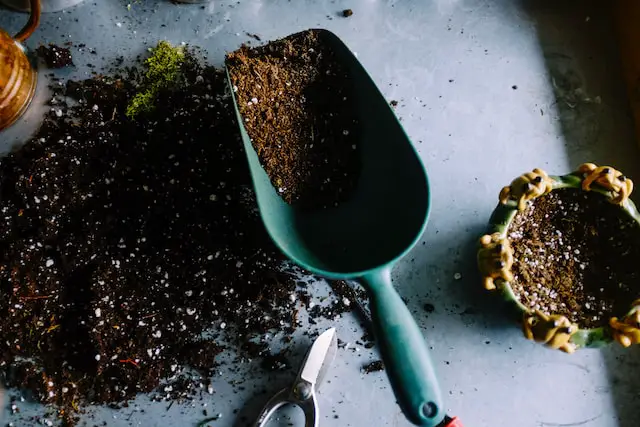
The potting soils below are well-suited to citrus trees, although there are certainly more out there. Note – I have not actually used these, since I make my own citrus potting soil. But I’ve searched out the ones that seem the closest to the ingredients in my recipe, although they will all probably need more pine bark and/or perlite for additional drainage.
Whatever you choose, avoid any potting mixes that include chemical wetting agents (sometimes labeled as “moisture control”), as these can hold on to too much moisture after watering. I’d also avoid mixes with added fertilizers, if possible, to give you the chance to use a fertilizer of your choice.
Soil Sunrise Citrus Potting Mix
This mix includes peat moss and worm castings for water retention and nutrition, perlite and sand for drainage, and lime to balance the pH – great ingredients for citrus trees. It’s also at a decent, mid-level price. However, it’s a fairly fine mix that would likely get waterlogged and compacted if overwatered, so I would add in some pine bark to solve that problem. This company hand blends these potting mixes. Another one they sell is labeled for pineapple plants and contains the same ingredients, but with the addition of fir bark.
Gardenera Citrus Tree Soil Mix
This product is similar to the Soil Sunrise but without the sand. It uses peat moss, perlite, worm castings, and lime. This is 100% organic, but it is a pricier option. Again, I would add pine or fir bark to increase drainage.
Kellogg Palm, Citrus, and Cactus All-Purpose Indoor and Outdoor Mix
This one looks really interesting. It contains recycled forest products, pumice, sand, bark fines, dehydrated poultry manure, hydrolyzed feather meal. The feather meal is made from poultry feathers, and it’s used as a slow-release nitrogen source, which is perfect for citrus. This soil mix has a coarser texture than many other bagged mixes, due to the addition of bark fines and pumice. It’s also 100% organic.
Miracle-Gro Cactus, Palm, and Citrus
I wanted to include a budget-friendly, easy-to-find option. This mix does contain both fertilizers and wetting agents, so keep that in mind when planting. I’ve heard of some growers who had success with their citrus trees when they combined the Miracle-Gro with 1/3 perlite and 1/3 pine bark.
Fox Farm Happy Frog Potting Soil
This potting soil would be perfect for citrus with the addition of pine bark. It’s lightweight and contains plenty of perlite to help with drainage. It’s formulated to have a pH of 6.3, right in the range that citrus trees need. Fox Farm’s Ocean Forest soil, another popular choice, would be too heavy and too alkaline for growing citrus trees in containers, so stick with the Happy Frog.

